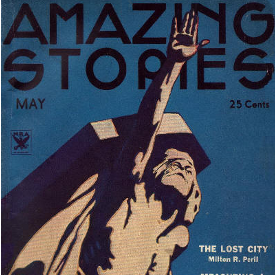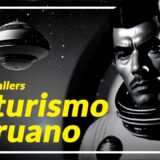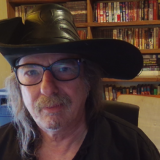by Setsu Uzumé
 From Kickstarter to ko-fi to patreon, the search for funding can be a huge challenge. I recently attended a lecture provided by the St. Louis chapter of the Volunteer Lawyers and Accountants for the Arts on the subject of applying for grants. Some of the most basic hurdles include finding grants that might be a good fit for your work, and how to prepare your materials in a way to make it easy for the folks reading your submission. The greatest learning curve when it comes to grant writing is how to think about looking for grants, and how to frame your work as a good fit. Here is a bit of grant application 101.
From Kickstarter to ko-fi to patreon, the search for funding can be a huge challenge. I recently attended a lecture provided by the St. Louis chapter of the Volunteer Lawyers and Accountants for the Arts on the subject of applying for grants. Some of the most basic hurdles include finding grants that might be a good fit for your work, and how to prepare your materials in a way to make it easy for the folks reading your submission. The greatest learning curve when it comes to grant writing is how to think about looking for grants, and how to frame your work as a good fit. Here is a bit of grant application 101.
First, grants specifically for speculative literature.
- Speculative Literature Foundation – org –The SLF currently offers six grants, and opportunities to serve as a juror.
- SFWA’s own Giver’s Fund Grants – https://www.sfwa.org/about/benevolent-funds/givers-fund-grants/ – these offset the costs of running workshops, reading series, or similar activities that further genre writing.
- If you write in a blended genre, consider other genre fiction organizations. The Romance Writers of America administer a grant to support academic research.
There is also funding available for very specific goals, such as Con or Bust, which helps fans of color attend SFF conventions. If your work intersects with other media, consider programs like the Wave Farm Media Arts Assistance Fund which focuses on moving image, sound art, and technology as an art form. When asked if games would be eligible for consideration they said yes – as long as there is a strong artistic element. The greatest hurdle toward finding grants is understanding how your work fits into the conversation they want to have. How does your work relate to society and culture as a whole? With your background, project goals, and themes in mind, the field opens up.
Generalized search hubs are the next step, both for individual authors and larger collectives, such as small presses and short-fiction venues.
- Creative Capital – creative-capital.org/online-resources – resources include budget templates, sample CVs, and workshop listings
- CaFÉ callforentry.org – Call For Entry. A listing of grants.
- AAC or artistcommunities.org
- A Blade of Grass focuses on art related to social issues
- TransArtists, as in transnational. A search engine for residencies internationally by region or discipline
- Poets & Writers has a number of grants to support queer poets, fiction authors, and creative-nonfiction authors
Other search hubs for grants include local and regional organizations, such as Regional Arts Commission, or the Midwest Artists Project (MAP). These are especially relevant to authors who live in that area, or whose work is deeply rooted in that location. Speaking of your work, don’t discount the relationship between your themes and research institutions.
Considering how much research we do for worldbuilding, theme can be the strongest link between you and funding. For example, if your work deals with the ocean, the local aquarium might be looking to partner with local artists for programming. Artist-At-Sea program offered by the Schmidt Ocean Institute is a wilder example, along with the Antarctic Artists & Writers Program and the SETI AIR program. These types of residencies are fond of projects that align with their mission, increase awareness and promote their research. Once you know which organizations to court, the next step is preparing your application materials.
Initial Pitch
This includes the basics, such as your bio, CV, and headshot. The material you pitch to the Regional Arts Commission and SETI should be slightly different, and creating base templates to reflect the different hats you wear will help. Similarly, your headshots should reflect the type of writing that you do, and Mary Robinette Kowal has tips for that on her blog. In terms of grant applications, your bio is an introduction to you, and your CV is an introduction to your work. A CV should be no longer than three pages and should include:
- your website
- your publications
- nominations and/or awards
- workshops you’ve attended such as Launch Pad.
- panels you’ve been on at conventions! These count. If you’re contributing to the conversation, the selection committee will want to know.
Artist’s statement (or artist statement)
This can be the most stressful part of the application, as anyone who has tried to write a query letter or Twitter promo can attest. However, as writers, we already have a lot of experience with this stage of the process. The most important thing is to represent yourself honestly. Talk about your work, your passion, and don’t lose your authenticity. As we know from racking up rejections, if you don’t fit this grant, this time, you’ll fit another.
If you have some experience reading slush, consider that the selection committee will be under the same pressures. Keep your statement brief and focused. What’s the main idea you want to get across if they don’t read to the end? What compels you to push forward with this? Consider your audience via the work the organization has funded in the past, or the CVs of previous grant awardees. The statement should include intent and crux of what you created. Talk about your technique, and what you used to convey what you know. Use first person. It’s not necessary to sound academic if you write outside academia. While I haven’t found a resource comparable to Query Shark for this purpose, I invite you to read Steve Lambert’s essay, No Longer Interested for other common pitfalls.
Above all, when writing an artist statement, don’t worry about trying to guess what they want to hear. This might contravene what I said earlier about games-as-art, but the last thing you want to do is misinterpret their mission statement, customize your statement for that, and then lose your voice and your interests as a result. Do your best to find a balance. They have to be a good fit for you, too.
Letters of Support (or letters of recommendation)
These are falling out of fashion, and providing their contact info might be all that’s needed. However, if you do request a letter from a mentor, give them 3-6 months to prepare, and a bullet-point list of what you’d like them to highlight.
You did it! Now what?
You might not need fine logistical details during the initial application phase, but planning for yes is as important as planning for no. Once you get your grant you’ll have to demonstrate some planning and project management, including budgets and deadlines. Give yourself a cushion. If you were a visual artist, this would be where you factor in design time and fabrication time. For us authors, a portion of the budget should go toward publicity or travel. Include a cushion in your timeline for when something goes wrong. Unless the grant forbids this, pay yourself – that includes rent, food, and setting aside 30% for taxes.
Find out the due date for the grant. Set YOUR due date a week in advance. Work backwards from there.
Cheat Codes
Read the grant requirements from start to finish before you begin. As with fiction, 80% of rejections are caused by a failure to follow directions. While building your checklist, it is especially important to review the fine print regarding rights. If you’re in the US, Volunteer Lawyers and Accountants for the Arts can assist for roughly $15. If you need to speak to an accountant for grant or other questions, do so outside of tax season.
Look up past recipients of the grant. Take a look at their CV examples and credentials. This is a great way to find out what the committee is looking for, and if there are other milestones that might be of interest. You can also ask for an example of a full application, like reviewing a practice test.
Search on your behalf, and your work’s behalf. Note that different grants have different requirements, not only for the artists themselves, but for the venture. If you wanted to start a small press, you don’t have to become a non-profit. Two programs for small businesses include The Awesome Foundation, which offers micro-grants of $1000, and Fractured Atlas, which offers a variety of fundraising programs, assistance, and education for a monthly fee.
Final Note
As with pitching books and submitting short fiction, grant applications sometimes merit a number of tries. Applying multiple times is not just allowed, but expected and encouraged. If your project wasn’t accepted this year, you’re encouraged to try again. Part of writing is the business of writing, including synopses, query letters, blurbs, and other peripherals. All the skills you’ve developed there apply here, and the worst they can say is “no.” This primer will get you started in 2020, and contains mostly US-based information, but I hope it makes the approach to grant applications a little more transparent. The world is full of opportunities, changing tides, and new ideas. Give it a shot. You never know.
•••









